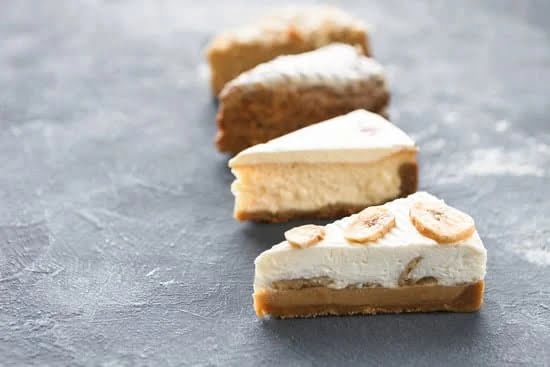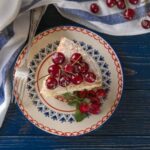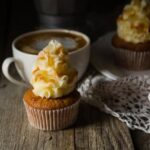Whipped frosting has become a favorite among cake decorators for its light and fluffy texture, making it the perfect choice for creating beautiful and delicious cake designs. In this article, we will explore the popularity and versatility of whipped frosting in cake decoration, as well as provide you with a brief history of its evolution over time.
When it comes to decorating cakes, choosing the right frosting can make all the difference. Whipped frosting not only adds a delightful flavor to your cakes but also provides a smooth canvas for creative designs. Its airy texture allows for easy spreading and piping, making it ideal for achieving intricate detailing on your cakes.
Over the years, whipped frosting has undergone various transformations, adapting to changing tastes and trends. From traditional buttercream recipes to modern versions made with cream cheese or whipped cream, there are countless variations to explore. Whether you prefer classic vanilla or indulgent chocolate flavors, whipped frosting offers endless possibilities for customization.
In this article, we will guide you through the process of decorating a cake using whipped frosting. We will start by discussing the essential tools you’ll need before embarking on your cake decorating journey. Then, we’ll dive into step-by-step instructions on preparing the cake layers and achieving a sturdy base for your frosting. We’ll also share mouthwatering recipes for homemade whipped frostings in different flavors.
So if you’re ready to unleash your creativity and elevate your cake decoration skills, join us as we delve into the world of whipped frosting. Whether you’re an experienced decorator or just starting out, this article will provide you with the tips and techniques necessary to create stunning and delectable masterpieces that everyone will admire. Let’s get started.
The Basic Tools You’ll Need Before Starting
Before you embark on your cake decorating journey with whipped frosting, it’s important to gather the necessary tools. Having the right equipment will make the process much smoother and help you achieve professional-looking results. Here is a list of essential tools that every cake decorator should have:
- Piping bags: These are used to hold the whipped frosting and allow for precise application onto the cake. They come in various sizes and materials, such as disposable plastic or reusable cloth.
- Couplers: Couplers are used to secure different decorating tips onto the piping bags. They allow you to easily switch between tips without emptying and refilling the bag.
- Decorating tips: There are numerous types of decorating tips available, each creating unique designs when piping frosting onto the cake. Some popular tips include round tips for writing or outlining, star tips for rosettes or borders, and petal tips for creating floral designs.
- Spatulas: Spatulas come in handy for smoothing and spreading whipped frosting onto the cake layers. Offset spatulas are particularly useful for achieving an even finish.
- Turntable: While not essential, a turntable is highly recommended as it allows for easy rotation of the cake during decoration, ensuring smooth and even application of the frosting.
Now that you know what tools you’ll need, let’s explore their functions and usage:
- Piping bags and couplers allow you to control the flow of whipped frosting with precision.
- Decorating tips determine the shape and design of the piped frosting, allowing for creativity in your cake decoration.
- Spatulas are necessary for spreading and smoothing whipped frosting evenly on the cake surface.
- A turntable assists in rotating the cake while decorating, making it easier to reach all sides of the cake.
These tools can be purchased at specialty baking stores or online retailers. However, if you’re on a budget or prefer a more sustainable option, there are alternatives available. For example, you can use Ziploc bags as makeshift piping bags and secure the tips with rubber bands instead of couplers. Additionally, everyday kitchen items like butter knives or spoons can serve as alternatives to spatulas.
It’s important to remember that practice makes perfect when it comes to using these tools effectively. Experiment with different techniques and find what works best for you. Don’t be discouraged if your first few attempts aren’t flawless – cake decorating is a skill that improves with time and experience.
Now that you have your tools ready, let’s move on to the next step: preparing the cake for whipped frosting decoration.
Preparing the Cake for Whipped Frosting Decoration
Before you can start decorating your cake with whipped frosting, it’s crucial to properly prepare the cake layers. This ensures that you have a sturdy and even base for frosting, allowing your designs to come out beautifully. Here is a step-by-step guide on how to prepare your cake for whipped frosting decoration:
- Level the cake: Start by leveling your cake layers. This is important because uneven layers can make it difficult to achieve a smooth and professional-looking finish. To level your cake, use a long serrated knife or a cake leveler to carefully trim off any domed tops.
- Crumb coat: Apply a thin layer of frosting all over the cake to create what is known as a crumb coat. This initial layer helps seal in any loose crumbs and provides a smooth surface for the final layer of frosting. Use an offset spatula or icing smoother to spread the frosting evenly.
- Chill the cake: After applying the crumb coat, it’s essential to chill the cake in the refrigerator for at least 30 minutes or until the frosting is firm to the touch. Chilling not only helps set the crumb coat but also prevents crumbs from interfering with your final decorations.
Once you have properly prepared your cake layers, they are now ready for whipped frosting decoration. With a stable and level base, you can confidently add your designs and create beautiful cakes that are sure to impress.
| Step | Description |
|---|---|
| Leveling | Trimming off any domed tops of the cake layers. |
| Crumb Coat | Applying a thin layer of frosting to seal in crumbs. |
| Chilling | Refrigerating the cake to set the crumb coat and prevent crumbs from interfering with decorations. |
By following these steps, you can ensure that your cake is properly prepared for whipped frosting decoration. Taking the time to level, crumb coat, and chill your cake will result in a professional-looking finished product that is ready for your creative designs.
Whipped Frosting Recipes for Different Occasions
When it comes to decorating a cake using whipped frosting, the flavor choices are endless. Whether you’re looking to create a classic vanilla cake, a rich chocolate masterpiece, or a refreshing lemon delight, there’s a whipped frosting recipe that will suit your taste. Here, we’ll explore some delicious variations of homemade whipped frosting recipes that are perfect for different occasions.
For those who prefer a classic and versatile option, vanilla whipped frosting is always a great choice. To make this light and fluffy frosting, you’ll need 1 cup of unsalted butter (softened), 4 cups of powdered sugar, 2 teaspoons of vanilla extract, and 2-3 tablespoons of heavy cream or milk.
Start by beating the butter in a mixer until creamy, then gradually add the powdered sugar while continuing to beat on low speed. Once the powdered sugar is fully incorporated, add the vanilla extract and heavy cream or milk and beat on medium-high speed for about 3-5 minutes until the frosting becomes light and airy.
If you’re looking for something indulgent and decadent, chocolate whipped frosting is sure to satisfy your cravings. To make this luscious frosting, gather 1 cup of unsalted butter (softened), 3 cups of powdered sugar, 1/2 cup of unsweetened cocoa powder, 2 teaspoons of vanilla extract, and 4 tablespoons of heavy cream or milk. Cream the butter in a mixer until smooth before adding the powdered sugar and cocoa powder gradually.
Mix on low speed until well combined. Add the vanilla extract and heavy cream or milk and continue mixing on medium-high speed for about 3-5 minutes until light and fluffy.
For those who enjoy a tangy twist in their cakes, lemon whipped frosting is an excellent choice. This recipe calls for 1 cup of unsalted butter (softened), 4 cups of powdered sugar, zest and juice of 2 lemons, 1 teaspoon of vanilla extract, and 2-3 tablespoons of heavy cream or milk. Begin by beating the butter until creamy, then add the powdered sugar gradually while continuing to beat on low speed.
Next, add the lemon zest, juice, vanilla extract, and heavy cream or milk. Beat on medium-high speed for about 3-5 minutes until the frosting becomes light and fluffy with a citrusy kick.
These whipped frosting recipes can be easily adjusted in terms of consistency, sweetness level, and color to match various cake designs. For a thicker consistency suitable for piping flowers and intricate details, add more powdered sugar. To achieve a lighter consistency for spreading or icing the cake smoothly, add additional heavy cream or milk. Additionally, you can experiment with gel food coloring to create vibrant hues that complement your overall cake design.
Next time you want to elevate your cake decoration game using whipped frosting, try one of these delicious recipes that are perfect for different occasions. From classic vanilla to rich chocolate and tangy lemon, there’s a flavor option for everyone to enjoy. Get creative and have fun experimenting with these recipes to create stunning cakes that will impress your friends and family.
Mastering Basic Whipped Frosting Techniques
Once you have your cake prepared and the whipped frosting ready, it’s time to master some basic techniques that will take your cake decoration skills to the next level. Below, we’ll explore popular piping techniques and provide detailed instructions for each one.
1. Rosettes:
To create beautiful rosettes on your cake, fill a piping bag fitted with a star tip with whipped frosting. Hold the bag perpendicular to the cake surface and apply even pressure as you squeeze out the frosting in a circular motion. Release pressure and pull away quickly to form a perfect rosette shape. Repeat this process to create a row of rosettes or cover an entire layer.
2. Borders:
Decorative borders can add elegance and definition to your cake design. Fit a piping bag with a round tip, then fill it with whipped frosting. Hold the bag at a slight angle against the edge of the cake and pipe small beads or shells along the border. Practice consistent pressure and movement speed to achieve even borders.
3. Writing:
Personalize your cake by writing messages using whipped frosting. Fill a piping bag fitted with a writing tip or simply snip off a small corner of a plastic ziplock bag filled with frosting. Use gentle pressure to pipe letters or words onto the cake surface, taking care to maintain even spacing between characters.
4. Drop flowers:
Whipped frosting drop flowers are simple yet impressive decorations that can be used as accents or in clusters on your cake. Fill a piping bag fitted with a flower nail and petal tip with whipped frosting in desired colors. Pipe small mounds of frosting onto parchment paper, then use additional piping tips to create petals around each mound, forming beautiful flowers.
Remember, practice makes perfect when it comes to mastering these techniques. Start by practicing on parchment paper before moving on to decorating your actual cake layers.
Troubleshooting Tips:
- If you notice air bubbles in your piping bag, gently tap it against a flat surface to release the trapped air.
- Inconsistent flow of frosting may be due to clogged decorating tips. Check and clear any obstructions before continuing.
- To maintain even pressure while piping, grip the piping bag firmly but not tightly. Practice applying consistent pressure to create smooth and uniform decorations.
With these basic whipped frosting techniques under your belt, you’ll be well on your way to creating beautiful and professional-looking cake designs. Stay tuned for our next section where we’ll explore advanced whipped frosting designs and ideas for those looking to take their skills to even greater heights.
Advanced Whipped Frosting Designs and Ideas
In this section, we will explore some advanced cake decoration ideas using whipped frosting. These designs are perfect for those who have mastered the basic techniques and are looking to take their cake decorating skills to the next level. From intricate edible flowers to ombre and gradient effects, there are endless possibilities to unleash your creativity with whipped frosting.
One popular advanced design idea is creating edible flowers using whipped frosting. With a little practice and patience, you can achieve stunning floral designs that will impress your guests. Start by mastering the technique of piping different types of flowers such as roses, daisies, or sunflowers. You can then arrange them on top of your cake or create a cascading effect down the sides for a truly impressive presentation.
Another trendy technique to try is achieving ombre and gradient effects with whipped frosting. This involves blending different shades or colors of frosting together to create a beautiful transition from light to dark or vice versa. To achieve this effect, start by preparing multiple shades of frosting using gel food coloring. Then use a spatula or an offset spatula to blend the colors gently on the cake surface, creating a seamless transition between each shade.
For those who love character-themed cakes, consider using whipped frosting to bring your favorite characters to life. Whether it’s a beloved cartoon character or a superhero, piped designs can transform an ordinary cake into something extraordinary. Using various decorating tips and techniques, you can create highly detailed faces, clothing patterns, or even landscapes that resemble iconic scenes from movies or books.
It’s important to note that mastering complex whipped frosting designs requires practice and attention to detail. Take your time when planning and executing these designs step-by-step. Don’t be discouraged if it doesn’t turn out perfectly on your first try – just like any skill, it takes patience and practice to become proficient in advanced cake decoration techniques.
With these advanced whipped frosting designs and ideas, you have the opportunity to truly showcase your creativity and wow your guests with stunning cake designs. Remember to experiment and have fun with different techniques, colors, and textures. The possibilities are endless when it comes to using whipped frosting as a medium for cake decoration. So go ahead, let your imagination run wild, and create edible works of art that will be the highlight of any celebration.
Tips for Successful Whipped Frosting Decoration
Achieving the Perfect Whipped Frosting Consistency
To achieve a smooth and silky whipped frosting consistency, there are a few strategies you can employ. First, ensure that your butter or shortening is at room temperature before incorporating it into the frosting. This will allow for easier mixing and smoother texture. Additionally, make sure to sift your powdered sugar before adding it to the frosting mixture to avoid any lumps.
Another important tip is to add small amounts of liquid, such as milk or heavy cream, gradually to the frosting mixture. This will help you control the consistency and prevent the frosting from becoming too thin. Start with a small amount and add more as needed until you reach your desired thickness.
If your whipped frosting is too thin or runny, you can thicken it by adding more powdered sugar. On the other hand, if it is too thick and stiff, you can thin it out with additional liquid or by incorporating more air into the mixture through additional beating.
Preventing Whipped Frosting Melting
Whipped frosting can be prone to melting in warmer climates or when exposed to heat for an extended period of time. To prevent this issue, it’s important to store your decorated cake in a cool environment until ready to serve.
Additionally, consider using stabilizers in your whipped frosting recipe. Ingredients such as gelatin or cornstarch can help stabilize the whipped cream and prevent it from collapsing or melting too quickly.
When transporting a cake with whipped frosting in warm conditions, keep it refrigerated for as long as possible and place ice packs around the cake box to maintain a cooler temperature. Avoid direct sunlight and hot environments whenever possible.
Avoiding Common Pitfalls
There are a few common pitfalls that decorators should be aware of when working with whipped frosting. Overmixing the frosting can lead to a dense and greasy texture, so it’s important to mix until just combined. Stop beating once the frosting has reached a smooth and fluffy consistency.
Undermixing the whipped frosting can result in a grainy texture and uneven flavor distribution. Make sure to beat the mixture until all ingredients are fully incorporated and no lumps remain. Take your time and be patient while mixing to ensure a velvety texture.
It’s also important to note that whipped frosting can become discolored if exposed to direct sunlight or certain food dyes. To avoid this, choose gel-based or powdered food coloring instead of liquid ones. These types of colorings are more stable and less likely to cause discoloration in your finished design.
Adding the Final Touches
After mastering the art of decorating a cake with whipped frosting, it’s time to take your creation to the next level by adding the final touches with edible decorations and garnishes. These additions not only enhance the overall appearance of the cake but also provide an opportunity to incorporate unique flavors and textures. In this section, we will explore creative ways to elevate your whipped frosting designs using edible decorations.
Exploring Edible Decorations
When it comes to edible decorations, the possibilities are endless. Fresh fruits like strawberries, blueberries, or thinly sliced citrus fruits can add a burst of color and a refreshing taste to your cake. You can arrange them in a pattern or scatter them randomly on top of the frosting for an eye-catching effect.
Another popular option is chocolate shavings or curls. To create these delicate accents, simply use a vegetable peeler or a knife to shave thin pieces off a block of chocolate. You can sprinkle them generously over your frosted cake or strategically place them in specific areas for added visual interest.
Sprinkles are a classic choice for adding flair to any dessert. Whether you opt for colorful jimmies, metallic pearl dragees, or themed shapes like stars or hearts, sprinkles instantly add fun and playfulness to your whipped frosting design.
Lastly, if you want to add some sparkle and glamour to your cake, consider using edible glitter or shimmer dust. These products come in a variety of colors and can be gently brushed onto the surface of the frosting for a dazzling effect that catches the light.
Experimenting with Garnishes
Garnishes are not only visually appealing but also provide additional flavors and textures that complement the whipped frosting. Fresh herbs like mint leaves, lavender sprigs, or rosemary can be used sparingly as accents on top of your cake.
For a touch of elegance, consider incorporating edible flowers. These can be real flowers that are safe for consumption, such as violets or pansies, or sugar flowers that can be purchased in specialty baking stores. They can be delicately arranged on top of the frosting in a cascading pattern or used sparingly as accents.
Crushed nuts, such as toasted almonds, pecans, or pistachios, can provide a lovely crunch and earthy flavor to your cake. Simply sprinkle them over the frosting or press them onto the sides for added texture.
Remember that when using garnishes and edible decorations, it’s essential to consider flavor combinations and balance. For example, if you have a citrus-flavored whipped frosting, you might pair it with fresh berries and mint leaves for a refreshing taste.
Finding Inspiration and Creating Unique Combinations
To truly unleash your creativity with whipped frosting decoration, don’t be afraid to seek inspiration from various sources. Browse through cookbooks, online forums, or social media platforms dedicated to cake decorating for ideas on unique combinations of edible decorations and garnishes. You might come across unexpected pairings or techniques that spark your imagination.
When experimenting with different combinations, keep in mind that not all flavors and textures will work harmoniously together. It is crucial to consider how the whipped frosting base interacts with the chosen edible decorations and garnishes to ensure an enjoyable eating experience for your guests.
By adding these final touches of edible decorations and garnishes, you not only enhance the aesthetic appeal of your cake but also elevate its taste and overall presentation. So go ahead and experiment with different combinations until you find one that truly showcases your creative vision while delighting both the eyes and taste buds.
Conclusion
In conclusion, decorating a cake using whipped frosting offers endless possibilities for creativity and expression. The popularity and versatility of whipped frosting make it the perfect choice for any occasion or design. Throughout history, whipped frosting has evolved to become a staple in cake decoration, and its smooth texture and lightness add the perfect finishing touch to any cake.
Before starting your whipped frosting decoration journey, make sure to gather the essential tools. Piping bags, couplers, decorating tips, and spatulas are indispensable for achieving professional results. Understanding the purpose and usage of each tool is crucial for successful decoration. Additionally, consider sourcing these tools from various sources or exploring more budget-conscious alternatives.
Properly preparing the cake is the foundation of a beautiful whipped frosting decoration. Leveling and layering the cake properly creates a sturdy base that ensures an even surface for frosting application. Chilling the cake before decorating is also important as it prevents crumb interference and allows the frosting to adhere better.
Once you have mastered the basics, you can experiment with different flavors of homemade whipped frosting recipes to match various designs and occasions. Adjusting consistency, sweetness, and color can help create truly unique creations that impress everyone who sees them.
When it comes to mastering basic techniques such as piping rosettes or creating borders or writing on cakes, detailed instructions accompanied by clear visuals are provided to guide you along each step. Troubleshooting common issues like air bubbles or inconsistent flow is also addressed so that your finished creation looks flawless.
If you’re feeling adventurous, advanced design ideas like edible flowers or ombre effects are presented as inspiration for your own magnificent creations. Planning and executing complex designs require patience and practice but can result in awe-inspiring cakes that leave a lasting impression on those who see them.
To ensure successful whipped frosting decoration every time, strategies for achieving smooth consistency are shared along with tricks to prevent melting in warmer climates. Furthermore, avoiding common pitfalls like overmixing or undermixing the frosting is crucial for achieving the desired results.
Finally, adding the final touches to your whipped frosting decoration can take it to another level. Edible decorations and garnishes like fresh fruits, chocolate shavings, and edible glitter can enhance the overall look and taste of your creation. Get inspired and experiment with unique combinations to truly make your cake stand out.
Frequently Asked Questions
Can you decorate a cake with whipped frosting?
Yes, it is possible to decorate a cake with whipped frosting. Whipped frosting has a light and airy texture that can be easily spread or piped onto cakes. It provides a smooth and creamy base for various decorations such as flowers, borders, or writing.
However, it’s important to note that whipped frosting may not hold intricate details as well as firmer frostings like buttercream or fondant. Nevertheless, it can still create an appealing and delicious design on your cake.
Is whipped cream frosting good for decorating?
While whipped cream frosting is delightful for taste, it may not be the most ideal choice for extensive cake decorating. Whipped cream frostings are typically lighter and less stable compared to other types of frostings. Due to their airy texture, they have a tendency to deflate or melt if exposed to high temperatures or left out for extended periods of time.
This makes them less suitable for intricate decorations that require stability and structure. However, if you are decorating a cake that will be served immediately and kept refrigerated until serving time, whipped cream frosting can work beautifully with simpler designs.
How do you smooth whipped frosting on a cake?
Smoothing whipped frosting on a cake requires a delicate touch due to its light consistency. Start by applying a thin crumb coat layer all over the cake to seal in any loose crumbs. This helps create an even surface for the final layer of frosting.
Once done, use an offset spatula dipped in warm water to gently spread the whipped frosting evenly across the surface of the cake. The warmth from the spatula will help smooth out any imperfections or air bubbles while creating an attractive finish. Take your time during this process to ensure an even application and try to avoid excessive scraping or dragging as this may cause the frosting to become lumpy or uneven in texture.

Welcome to our cake decorating blog! My name is Destiny Flores, and I am the proud owner of a cake decorating business named Cake Karma. Our mission is to provide delicious, beautiful cakes for all occasions. We specialize in creating custom cakes that are tailored specifically to each customer’s individual needs and tastes.





